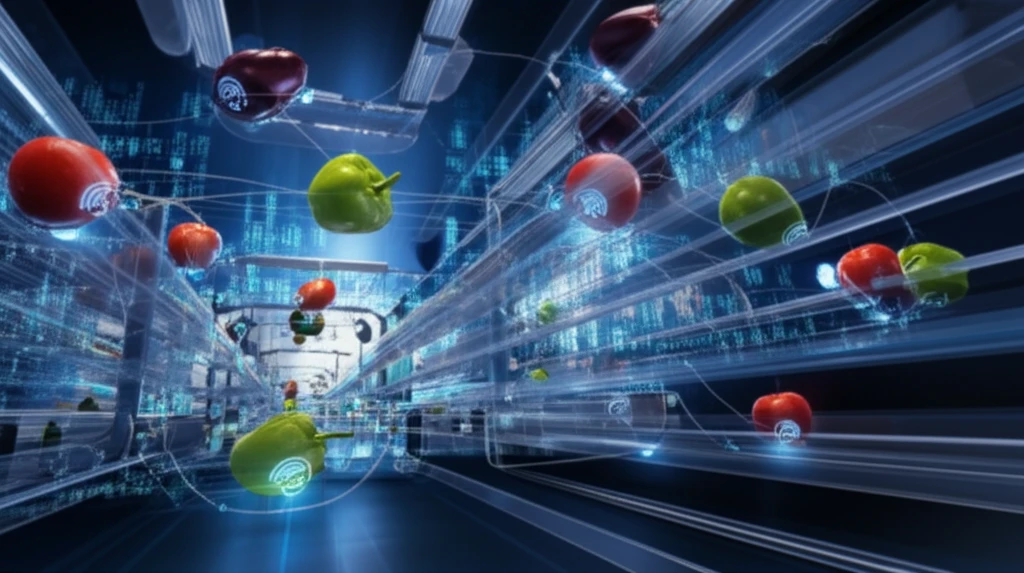
Smart Tech to Stop Food Waste: How Dynamic Shelf Life Analysis Can Save Fruits & Veggies
"Discover how innovative tech, like RFID sensors and real-time data analysis, can revolutionize the fresh produce supply chain, cutting losses and boosting quality from farm to table."
The world's growing population faces a massive challenge: ensuring a safe and sustainable food supply, especially as more people live in cities. A balanced diet rich in fruits and vegetables is vital, yet a significant portion of produce is lost between harvest and consumption. This loss represents not only economic waste but also a squandering of resources like land, water, and energy.
In developing countries, 30-40% of produce is lost post-harvest. In Brazil, retailers lose an estimated 600 million Reais annually due to fruit and vegetable spoilage, with 86% of losses occurring during display for sale. Maintaining the quality of fruits and vegetables, which continue to metabolize after harvest, requires careful management of factors like appearance, texture, taste, nutritional value, and safety. The goal is to minimize both qualitative (e.g., loss of nutrients) and quantitative (e.g., physical waste) losses.
This article explores how dynamic shelf-life analysis, enabled by technologies like Radio Frequency Identification (RFID) and sensors, can revolutionize the fruit and vegetable supply chain. By monitoring conditions in real-time and predicting shelf life, these tools promise to shift the industry from a 'first-in, first-out' (FIFO) to a 'first-expired, first-out' (FEFO) system, reducing waste and improving produce quality.
Decoding Dynamic Shelf Life: How Sensors and Data Analysis Keep Produce Fresher

Dynamic shelf-life analysis uses predictive algorithms to assess the remaining freshness of fruits and vegetables, based on real-time monitoring of quality-related parameters. This approach allows for a FEFO (First Expired, First Out) strategy, ensuring that products are distributed and sold according to their actual remaining shelf life rather than just their arrival date.
- Temperature: Temperature strongly influences the rate of biochemical reactions and decay.
- Relative Humidity: Maintaining optimal humidity prevents moisture loss, which causes wilting and reduces marketability.
- Atmospheric Composition: Modified atmospheres (MA) with controlled levels of oxygen, carbon dioxide, and ethylene can slow down respiration and extend shelf life.
From Farm to Table: The Future of Fresh Produce
Dynamic shelf-life analysis offers a powerful tool for reducing waste and improving the quality of fruits and vegetables. By combining sensor technology, data analytics, and optimized logistics, the industry can move towards a more sustainable and efficient system.
The shift from FIFO to FEFO strategies promises significant benefits:
<ul> <li><b>Reduced Waste:</b> Minimizing spoilage at all stages of the supply chain.</li> <li><b>Improved Quality:</b> Ensuring consumers receive fresher, more nutritious produce.</li> <li><b>Enhanced Efficiency:</b> Optimizing distribution and inventory management.</li> </ul> Realizing these benefits requires collaboration across the entire supply chain, from producers to retailers. Investing in technology and embracing data-driven decision-making will be essential for creating a future where fresh, healthy food is accessible to all.
